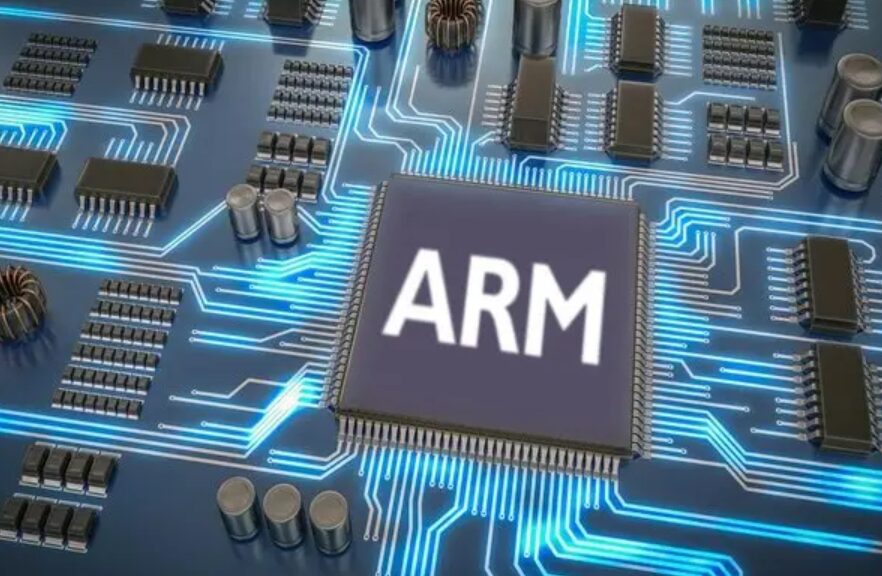Skip to content
Unlike independent brands like Intel or AMD, ARM-designed processors may not be known by many users, but few would think that processors designed by ARM exist in over 130 billion different devices. This includes smartphones, gaming consoles, smartwatches, and even in hygrometers, ATMs, and countless other devices.
Moreover, in 2020, these ARM-based processors also made their way to Apple’s Mac computers, challenging the dominance of the two giants, Intel and AMD, for the first time. As many ARM CPUs began to enter the data center space, aiming to create new turning points in processing power, the strength of these two giants was once again under threat.
Even if it’s just the first step, if you look at how smartphones have changed the world, you will realize how crucial ARM chips became when they became the default choice for these devices.
But if you look at the milestones in the journey of the company designing ARM chips from its founding to now, it is hard to believe they have reached a position today that changes the world.
This Cambridge-based company was founded in 1979 as Acorn, and its goal was not to design chips, but to create computers using the 6502 chip for slot machines. However, they suddenly rose to fame in 1982, thanks to a BBC television program.
At that time, the British government and the BBC wanted to create a program to teach the British how to use computers. To make the program interesting, the BBC wanted a powerful enough computer to teach BASIC, as well as many other features including graphics, sound, networking, and even basic artificial intelligence.
Within a week of learning about the BBC’s requirements, Acorn showcased its computer prototype to the station. Beating a series of giants at the time, Acorn’s BBC Micro was the only device that met the BBC’s required specifications and even excelled in some standards.
To meet performance requirements, Acorn developed the Tube extension interface, which helped the BBC Micro connect to auxiliary CPUs or coprocessors. This auxiliary CPU would run the user’s software, while the main CPU on the BBC Micro only managed input and output devices like screens, keyboards, and storage memory. This significantly improved the processing speed of the machine without the need for new chips.

The Tube interface was also open to connect with sub-processors from other partners. It not only expanded functionality but also helped Acorn evaluate the performance of other processors. In the end, they found that no one could beat the current MOS 6502 chip, not even the Motorola 68000 chip used in Apple Macintosh computers.
From there, Acorn decided to design its own processor. Inspired by an idea from IBM, they focused on the development of their RISC (Reduced Instruction Set Computing) architecture-based chips.
Typically, to run complex software tasks, the CPU would need to cover instructions for basic tasks of the chip, such as loading data, performing arithmetic operations, and storing to memory. …
While CISC (Complex Instruction Set Computing) architectures, like Intel and AMD’s CPUs, aim to execute tasks with as few instruction lines as possible, complex instruction sets embedded in the CPU help the chip understand and perform many basic tasks in several CPU cycles. Therefore, the system needs less RAM to store instructions, and software instructions are also shorter, but this makes the CPU structure very complex as it requires more transistors to store these instructions.
RISC architecture is precisely the opposite. RISC is about using simple instructions that can be executed in one CPU cycle. Thus, explaining each software task requires more command lines, needing more RAM to store these basic instructions. In return, the CPU structure is simpler and requires fewer transistors.
In other words, CISC architecture is like a large-wheeled bicycle where the rider needs to pedal multiple times to complete a rotation, while RISC is like a small-wheeled bicycle where the rider only needs to pedal once to make the wheel spin. Completing a rotation of the wheel. However, the small wheel must turn more times to travel the same distance as the large-wheeled bicycle.
Fortunately for Acorn, their experience using the 6502 chip (the pioneer of RISC architecture) made them very suited for this approach. Using the Tube interface developed when creating the BBC Micro computer, Acorn created the first RISC-based CPU, called the Acorn RISC Machine – thus generating the ARM name. Initially, ARM CPUs were used for Acorn’s internal R&D, but soon after, a commercial version was created under the name ARM2.
In 1987, the first personal computer using ARM2 was released, named Acorn Archimedes. Although it had 245,000 fewer transistors than Intel’s chips, it demonstrated better performance than Intel’s 286 chip at the time. The Archimedes ran on Arthur OS and proved to be a reliable, fast, and powerful machine. It had excellent graphics for the time, featuring a graphical user interface and some low graphic titles that matched the machine’s speed.
At that time, this first ARM-based computer was considered the fastest personal computer, with performance scores many times higher than Intel’s 80286 chip.
Due to its relatively simple design and fewer transistors, ARM CPUs provided unexpected benefits for developers: consuming less power and generating less heat. This made it particularly relevant for mobile devices and brought another turning point for the company – collaboration with Apple.
In the late 1980s, Apple was looking for a powerful CPU that could convert handwritten content on a touchscreen to text and run a GUI on AA battery devices. That was Apple’s famous Newton tablet, which only ARM chips could meet their needs.
Not wanting to purchase off-the-shelf chips, Apple partnered with Acorn and Acorn’s chip manufacturing partner VLSI to establish an independent company outside of Acorn. This new company was named Advanced RISC Machines or ARM – which has now been officially established. With Apple’s resources, ARM developed the ARM6 core, and the first CPU using this core was ARM610. A version with a clock speed of 20 Mhz was used in the Apple Newton released in 1993.
Although the Apple Newton was a huge failure, it still brought a buzz to ARM CPUs. ARM CPUs continued to be used in new series of Acorn and eMate 300 computers, with Apple Newton versions featuring keyboards and 28 hours of battery life.
When the ARM7 core CPU was installed in Apple’s iPod and Nintendo’s Game Boy Advance console, the reputation of ARM CPUs in mobile devices was further enhanced. In 2004, another pair of ARM CPUs were also used in the Nintendo DS dual-screen game console.
In 2007, when the first iPhone equipped with a CPU using the ARM11 core was released, a new chapter in ARM’s history began. From then on, ARM CPUs became the default choice for smartphones, whether from Apple or any other company.
The impact of ARM chips is much greater than people imagine. Not only are they common in smartphones or game consoles, but the power advantages of processors based on ARM or licensed by ARM are also used in smartwatches, digital cameras, TVs, networking devices, storage devices, IoT devices, and automobiles.
Moreover, now even devices prioritizing performance over energy efficiency, such as laptops, desktops, servers, and even supercomputers, are beginning to adopt ARM CPUs. In addition to the globally popular new Mac computers equipped with Apple’s M1 chip, there is also Fugaku, the world’s fastest supercomputer, whose CPU uses Fujitsu-designed ARM AArch64 architecture. Not to mention the ARM chips just landed in the helicopter on Mars.
As of February 2020, global partners have shipped about 160 billion ARM chips, averaging over 22 billion chips per year in the past three years, and the global shipment of ARM chips is soon expected to exceed 200 billion – more than any other competitor in the world. Interestingly, ARM itself does not produce any chips; it is all because of their partners.
Welcome angel round,Around enterprises to join the group (Friendly connections including 500 automotive investment institutions including top institutions; completed multiple enterprises); there are many groups for communication with science and technology innovation companies, automotive industry whole vehicles, automotive semiconductors, key components, new energy vehicles, smart connected vehicles, aftermarket, automotive investment, autonomous driving, vehicle networking, etc., please scan the administrator’s WeChat to join the group (Please indicate your company name)




